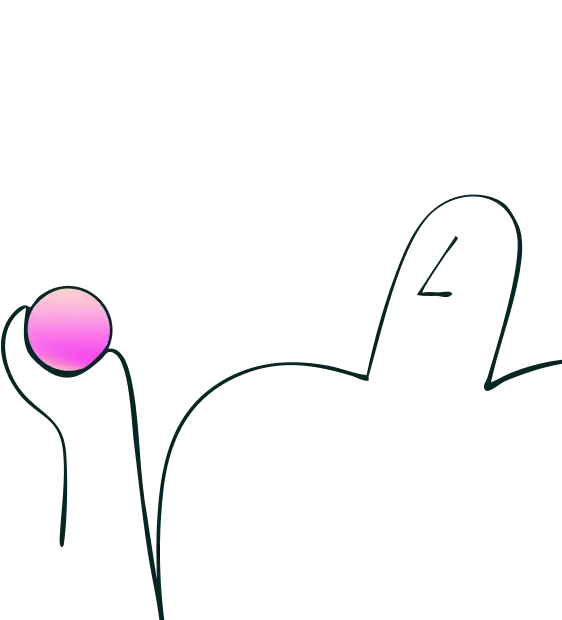16 Jun 2025
|8 min
User research insights
Learn how to effectively analyze qualitative data, use data triangulation to verify findings, differentiate between findings and insights, and translate insights into actionable strategies.

In a previous article, I talked about how to effectively analyze and synthesize qualitative data obtained during UX research studies.
Now, let’s go further to explore how to use data triangulation to verify findings obtained from multiple data sources. I also explore the difference between findings and insights, and explore how to turn your user research insights into actionable strategies.
How to triangulate data
Albert Einstein once said, “Not everything that can be counted counts, and not everything that counts can be counted.” This quote holds true in the world of research. Decision-making requires multiple inputs, and data triangulation is a powerful technique to substantially enhance both the credibility of – and our collective confidence in – our research.
Triangulation involves using multiple data sources to support your research findings. Here are some common approaches to triangulate data:
Secondary/desk research: Using existing literature and studies to complement primary research.
In-house usage analytics: Leveraging data on user interactions with existing products or services.
Customer service and feedback: Analyzing customer feedback and support interactions.
Product reviews: Mining reviews and feedback on platforms like Amazon or G2.
Stakeholder interviews: Gathering input from internal team members and stakeholders.
Competitive analysis: Studying competitors’ products and strategies is a valuable way to benchmark your offering. A deeper competitive product analysis can reveal gaps, opportunities, and user expectations your team can capitalize on. Understanding what is content design can also provide insights into how to better structure and present your findings, enhancing the overall impact of your research
Heuristic evaluations: Conducting expert reviews to identify usability issues.
Data triangulation enhances the validity of your findings, provides a comprehensive view of the problem, and increases confidence in your research outcomes.
Your go-to user research platform
The best teams use Lyssna so they can deeply understand their audience and move in the right direction — faster.
User research findings vs user research insights
In qualitative research design, the journey doesn’t end with findings; it begins there. Findings include articulated observations – what you saw, heard, and collected. They represent data points that directly relate to your research goals. However, findings are just pieces of the puzzle.
Insights are the gems that emerge from your findings. They are interpretations of your findings and answer questions like ‘What does this mean?’ and ‘Why does this matter to customers?’. Insights often reveal hidden truths, offer fresh perspectives, and inspire action. They're unarticulated ‘aha’ moments that speak to your stakeholders and are grounded in data.
This is especially critical in customer experience research, where understanding unspoken needs can shape the success of your product or service.
To determine if an observation, finding, or theme qualifies as an insight, consider these questions:
Is it the first time you’re hearing it?
Is it meaningful to you and the project?
Is it grounded in actual data?
Does it inspire clear and direct action?
Does it present a new perspective?
Is it simple to understand?
It’s important to note that you'll always have findings, but you may not always uncover insights! This is especially true in evaluative research.
How to turn user research insights into action
Ultimately, the goal of qualitative research, analysis, and synthesis is to drive action. Insights are highly sought after because they have the potential to impact the products and services we work on. Making informed product decisions is the endgame of our research efforts.
Here are ten tips on how to identify insights from findings in user research:
1. Look for patterns
Pay attention to recurring themes or consistent feedback across different participants or data points. Patterns can often reveal underlying user behaviors or attitudes.
2. Contrast extremes
Compare the most divergent user responses or behaviors. These extremes can highlight key pain points or particularly satisfying aspects of the user experience.
3. Contextualize findings
Consider the broader context of your findings. How do they relate to the user’s environment, background, or other external factors?
4. Seek outliers
Don’t dismiss outliers or anomalies. Sometimes, the most insightful information comes from unexpected or unique responses.
5. Connect the dots between data points
Look for relationships between different types of data, such as how user attitudes correlate with specific behaviors.
6. Identify emotional triggers
Pay attention to emotional responses in your data. Strong emotions, whether positive or negative, can be indicative of significant user needs or problems.
7. Notice what’s unsaid
Be aware of what isn't articulated or is missing in user responses. The absence of expected comments or feedback can be just as insightful as what’s explicitly stated.
8. Prioritize user quotes
Direct quotes from users can be powerful. They often encapsulate experiences, feelings, or problems in a way that data alone can't.
9. Question assumptions
Regularly challenge and revisit your initial assumptions. Does the data support, contradict, or expand upon them?
10. Collaborate and discuss
Share your findings with team members or stakeholders. Discussing the data with others can provide new perspectives and help uncover insights you might have missed.
Remember, insights aren't just about what participants are doing or saying, but about understanding the ‘why’ behind their actions and statements. The goal is to translate your findings into insights that will result in meaningful improvements or innovations in your product or service.
How to structure research synthesis for maximum impact
To move your stakeholders into acting upon your learnings, it's essential to not only bridge the gap between insights and action, but to structure the approach and outcomes strategically. Here are some practical tips for doing this:
Marry your analysis approach and framework with the specific product decisions to be made. For example, are you trying to rename a feature, inform navigation, or evaluate impact vs feasibility, opportunity vs effort, cost vs time, frequency of use vs satisfaction, or importance vs urgency?
Present your data in business terms, such as KPIs, and in other formats that resonate with your stakeholders.
Organize your takeaways by function (e.g. content, design, development, marketing), priority, and confidence level, collaborating closely with your team.
Always include specific recommendations. I find organizing these into ‘short-term recommendations’ and ‘long-term considerations’ is always well received.
Manage your expectations. This process takes practice and continuous refinement.
In the end, remember that the people who need to consume and act on the research are your users, too. They’re the ones who will transform your insights into real-world impact.
From research analysis to action
Qualitative analysis and synthesis are intricate processes that bring order and meaning to the chaos of collected raw data. They empower researchers to uncover hidden patterns, gain fresh perspectives, and extract actionable insights. By using a combination of methods such as thematic analysis, content analysis, affinity diagramming, and data triangulation, you can navigate the complexity of qualitative research effectively.
Insights born from these processes are catalysts for change, innovation, and improvement. They have the power to shape products, services, and strategies in ways that resonate with users and stakeholders to drive success.
Keep in mind, it's not just about gathering data – it's about the journey from analysis to synthesis and, ultimately, from insights to action. Because our end goal, as researchers, it to move our teams into action.
Elevate your research practice
Join over 320,000+ marketers, designers, researchers, and product leaders who use Lyssna to make data-driven decisions.
--
This article was authored by Michele Ronsen, Founder and CEO of Curiosity Tank. Michele is a user research executive, coach and educator. She teaches design and user research to people around the world. Her corporate trainings and workshops are inspired by working with Fortune 500s and start-ups for more than twenty years. Fuel Your Curiosity is her award winning, free, user-research newsletter. In 2020, LinkedIn honored Michele with a TopVoices award in the Technology category. She is the first and only researcher to receive this award.
You may also like these articles


Try for free today
Join over 320,000+ marketers, designers, researchers, and product leaders who use Lyssna to make data-driven decisions.
No credit card required






